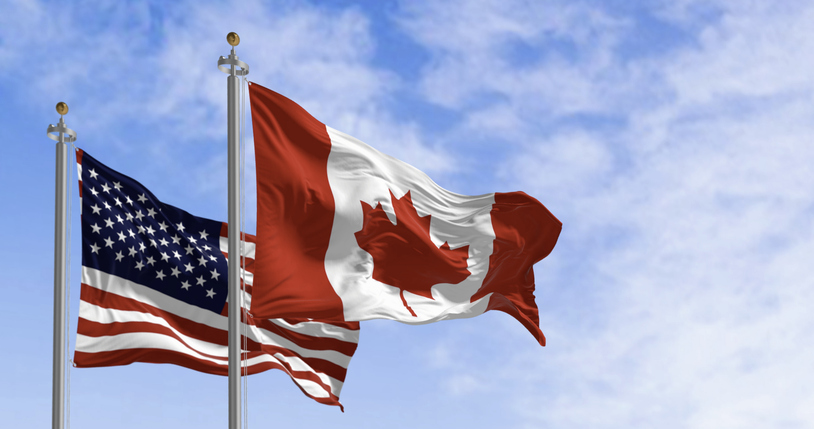Cross-border tax planning between Canada and the U.S. will require you to manage income, assets and residency to avoid double taxation and meet rules in both countries. Key differences in retirement accounts, capital gains and estate taxes can create issues without careful planning. Tax treaties help, but dual filers and investors still face complex reporting.
Who Needs Cross-Border Tax Planning?
Cross-border tax planning is relevant for individuals and families with financial ties to both Canada and the U.S., particularly those who live, work or invest across the border. This includes dual citizens, expatriates, snowbirds spending extended periods in the other country and those with cross-border inheritances or business interests.
U.S. citizens and green card holders residing in Canada must file annual U.S. tax returns regardless of where they live, which can create overlapping reporting obligations. For example, a U.S. citizen who retires to British Columbia and collects distributions from a 401(k) must report that income to both the IRS and the Canada Revenue Agency—even if they are a full resident of Canada.
Ownership of retirement accounts—such as RRSPs and RRIFs in Canada, and 401(k)s and IRAs in the U.S.—can also trigger tax complexity, especially when distributions or contributions occur in the “wrong” jurisdiction. For example, a Canadian resident contributing to a Roth IRA may not receive Canadian tax deferral on those contributions. This can lead to annual Canadian tax on investment growth—even though the account is tax-free in the U.S.
Real estate ownership in the other country introduces further complications. Capital gains, estate taxes and foreign reporting rules may apply.
Additionally, entrepreneurs operating businesses on both sides of the border face additional challenges, including transfer pricing rules and cross-border entity structuring.
About the Canada-U.S. Tax Treaty
The cornerstone of cross-border tax coordination between Canada and the U.S. is the Canada-U.S. Income Tax Convention1. This treaty was first signed in 1980 and subsequently amended by five protocols.
One of the treaty’s main purposes is to help avoid double taxation by assigning taxing rights between the two countries. These rights are assigned based on factors like residency as well as source and type of income. For example, it typically allows only one country to tax certain types of income, such as pensions or capital gains from real estate.
The treaty also provides mechanisms for tax credits and exemptions. A Canadian resident earning U.S. dividends, for instance, may claim a foreign tax credit in Canada for taxes paid to the IRS, reducing overall tax liability.
In addition, the treaty outlines tiebreaker rules to determine tax residency in situations where an individual qualifies as a resident of both countries under domestic law. These rules consider factors such as permanent home (where a person owns or rents a dwelling), center of vital interests (where personal and economic ties are strongest) and habitual abode (where a person spends the most time over a given period).
Beyond individual taxation, the treaty affects corporations, partnerships and trusts, clarifying the treatment of cross-border business income and withholding taxes. Treaty-based positions often require additional disclosure to tax authorities.
How Different Types of Income Are Taxed

Tax treatment of income in cross-border situations depends on both the type of income and the individual’s residency and citizenship status. While the Canada-U.S. tax treaty helps coordinate rules, key differences remain in how each country taxes retirement income, capital gains and estates.
Retirement income, such as distributions from IRAs, 401(k)s, RRSPs and RRIFs, is generally taxable in the country of residence. However, exceptions apply. For instance, U.S. citizens living in Canada are taxed by both countries on retirement income, though foreign tax credits may offset the burden. Contributions to certain plans may not be recognized as tax-deferred in the other country, which can lead to unexpected tax reporting obligations.
Capital gains are treated differently across the border. Canada taxes capital gains at a 50% inclusion rate. Meanwhile, the U.S. taxes the full amount but applies lower rates to long-term gains. Gains on a primary residence are exempt in both countries under certain conditions, but differing thresholds and definitions can result in partial taxation. Additionally, the U.S. requires annual reporting of foreign accounts and may tax unrealized gains under specific expatriation rules.
For example, a Canadian selling a U.S. vacation property may owe capital gains tax in both countries. The U.S. taxes the full gain, while Canada taxes 50% of the gain. However, in this situation, the seller could typically claim a foreign tax credit to avoid full double taxation.
Estate and inheritance tax rules diverge sharply between the U.S. and Canada. Canada has no estate tax but imposes a deemed disposition tax on death, effectively taxing unrealized gains. The U.S., on the other hand, levies an estate tax on worldwide assets for citizens and residents, and on U.S.-situs assets for nonresidents.
For example, a Canadian inheriting a U.S. brokerage account from a nonresident relative may be subject to U.S. estate tax if the account’s value exceeds the U.S. exemption threshold for nonresidents, currently $60,000. Coordinating estate plans to manage exposure to both systems can involve dual wills, cross-border trusts or life insurance strategies.
Frequently Asked Cross-Border Tax Planning Questions
How can I avoid double taxation between the U.S. and Canada?
The Canada-U.S. tax treaty allows individuals to claim foreign tax credits for income taxed by both countries. This reduces the tax owed to one country based on taxes already paid to the other, often eliminating double taxation.
What is the 183-day rule?
The 183-day rule helps determine residency for tax purposes. In Canada, spending 183 days or more in a calendar year typically makes you a resident for tax purposes. In the U.S., a similar “substantial presence test” looks at days spent over a three-year period to assess whether you’re considered a U.S. resident for tax purposes2.
Do I need to report foreign accounts?
Yes. U.S. citizens and green card holders must file annual reports of foreign accounts (FBAR and Form 8938) if account values exceed certain thresholds. Canada also requires disclosure of foreign property over CAD $100,000 in value. Failure to report can result in substantial penalties.
Bottom Line

Cross-border tax rules between Canada and the U.S. introduce a wide range of considerations that can affect income, reporting obligations and long-term planning. Numerous factors influence how taxes are calculated and which country has the right to tax. While treaties and credits offer some relief, staying compliant often requires careful coordination across both systems. Whether dealing with retirement income, property sales or inherited assets, the details can make a significant difference in outcomes.
Tax Planning Tips
- A financial advisor can help you coordinate strategies, avoid double taxation and meet reporting requirements. Finding a financial advisor doesn’t have to be hard. SmartAsset’s free tool matches you with vetted financial advisors who serve your area, and you can have a free introductory call with your advisor matches to decide which one you feel is right for you. If you’re ready to find an advisor who can help you achieve your financial goals, get started now.
- If you want to know how much your next tax refund or balance could be, SmartAsset’s tax return calculator can help you get an estimate.
Photo credit: ©iStock.com/rarrarorro, ©iStock.com/filadendron, ©iStock.com/fizkes
Read the full article here
















